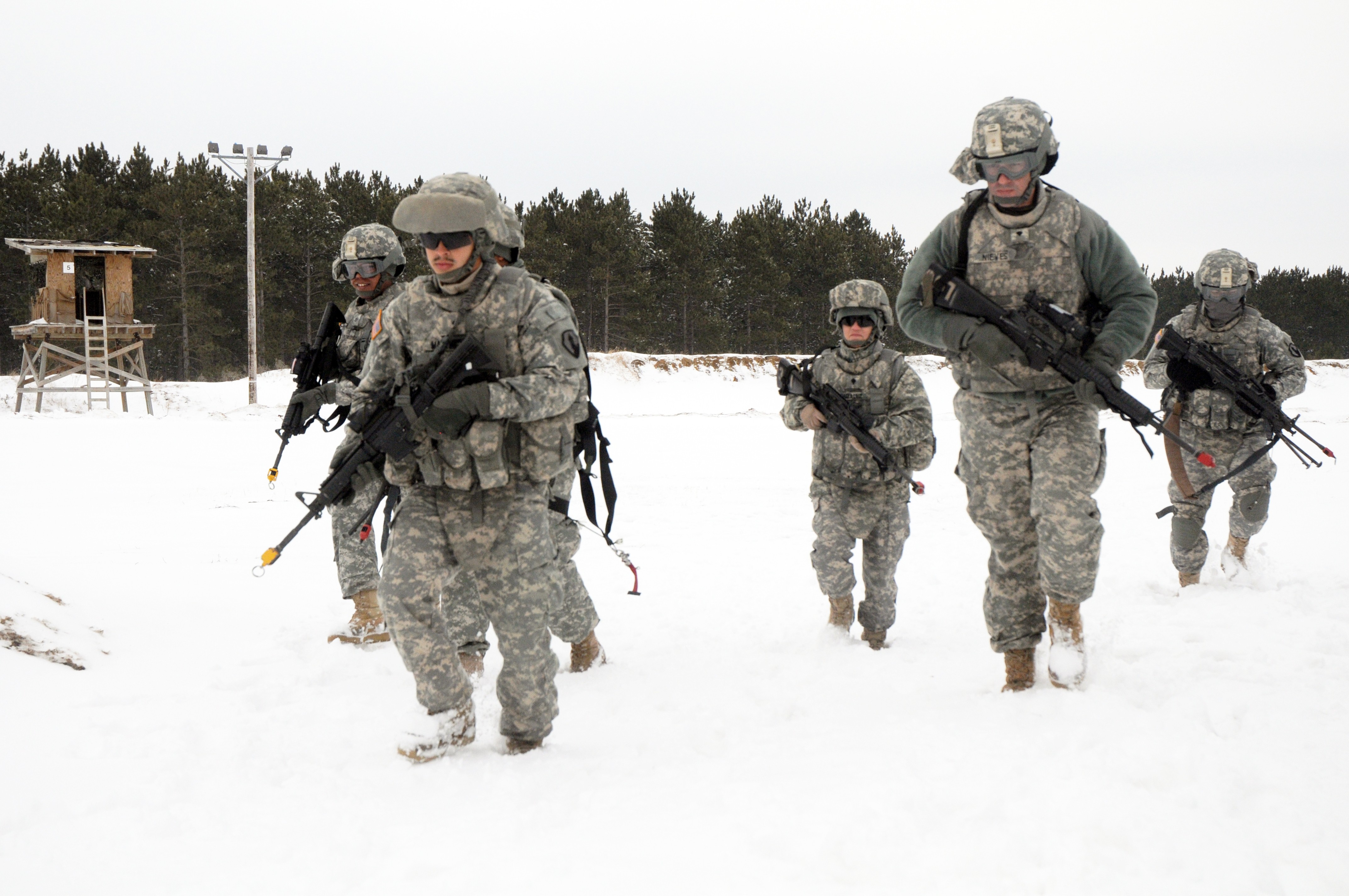FORT McCOY, Wis. -- Soldiers from the 475th Engineer Company trudged through 15-inches of snow and shivered in minus-26 degree temperatures as they trained to deploy in support of Operation Enduring Freedom.
That was unusual for the 475th because it is an Army Reserve unit from Ponce, Puerto Rico.
Company Executive Officer 1st Lt. Mike Martinez said normal high and low temperatures at this time of the year in Puerto Rico are 82 and 62 degrees, "with sunny beaches, and that's what we normally train in." Summer high and low average temperatures in their home territory are 100 and 89.
The Puerto Rico unit members stepped off the plane at the La Crosse Airport Jan. 16 into near zero temperatures. It got down to minus-26 degrees Feb. 10, the lowest of their stay at Fort McCoy.
The National Oceanic and Atmospheric Administration La Crosse Office reported 11.3 inches of snow fell in the area in January, with a snow depth of 14 inches at that time. The snow depth Feb. 1 was 15 inches. The area received five inches of snow Feb. 20.
"The weather affects training," Martinez said, "but we just try to keep warm, keep motivated and keep training. We may have to go to mountainous areas of Afghanistan, and there is a lot of cold and snow there."
"Today it is a heat wave," Martinez said, when the temperature reached 34 degrees Feb. 23.
The Puerto Rico unit, along with the rest of the Soldiers and civilians at Fort McCoy in mid-January to mid-February, experienced several low temperatures ranging to minus 26, according to James Hubbard, Sparta-Fort McCoy Airport manager.
Company Commander Maj. Hector Castaneda explained his feelings about the Wisconsin winter, "Incredible. Difficult. Everyone just bundles up."
Spc. Carlos Diaz, a 475th medic, said, "We had a few chilblains, like ice burns, but not to the point of frost bite. We gave those Soldiers proper treatment and rest."
Jack Wagner, Mobilizing Unit In-Processing Center operations supervisor, said all Army Soldiers learn how to prevent themselves and fellow Soldiers from becoming cold-weather casualties as part of their Army Warrior Tasks training as well as during their basic Initial Entry Training.
Also, Wagner said, every company sized unit in the Army has a safety officer/noncommissioned officer who has the responsibility of providing appropriate briefings and information for how to deal with climatic extremes.
Ultimately, it is a first-line leadership responsibility to ensure their troops are protected from injury in any climatic situation, and also to be prepared to adapt protective measures as the day progresses.
Martinez said Soldiers learned cold-weather survival techniques, such as dressing properly. "We weren't at the start. We got used to wearing several loose layers and changing socks every couple of hours. We were given the seven-layer Extreme Cold Weather System clothing; we just needed to learn how to use it in a specific way."
Martinez said, for example, the intermediate cold-weather boots issued to the Soldiers were inadequate for the weather they encountered. "We were issued extra boot liners that helped, and we wore two pairs of socks at the same time, and that helped. We also found that if you were exercising, moving, it was fine. But, when you stopped, that is when your feet got colder and could hurt. It was a matter of keeping moving."
For Spc. Alberto Martinez, it was the first time he experienced snow. "At first I was excited, but after a few days my feet got cold and I got serious about putting on extra layers of clothing. We had a 100-degree drop in temperature from leaving Puerto Rico to getting to Fort McCoy. We struggled at first. We just learned what to wear, and how and when to wear it."
"We got into the habit of checking the weather when we got up in the morning, and preparing what clothing items to wear and take along," Spc. Martinez said. "Some of that was carrying extra boots and socks. I had never worn gloves or a knit cap. Change is hard, and is a challenge, but it is good. You just have to adapt and keep going."
He was the only one in a group of six Puerto Rico Soldiers in an improvised explosives detection class who was a first-timer to snow. The other five had experienced snow in their Army travels to Forts Leonard Wood, Jackson and Sill.
Yet another Soldier, Spc. Emmanuel Garcia, a horizontal construction equipment operator (bulldozers, scrapers, back hoes, excavators), said he was born in New York and lived back and forth between there and Puerto Rico as his parents worked in New York and they had Family in Puerto Rico. "I was excited to see the snow at Fort McCoy, even though we couldn't play football. We knew it would be cold. We just dressed right, kept our feet dry and kept hydrated. When we went indoors we took off several layers. You go with the flow and keep mission-oriented."




Social Sharing